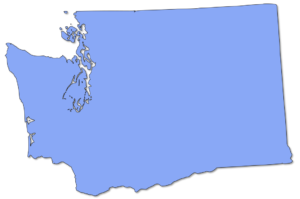Update: Online Learning. Report to the Legislature
 In 2009 the Washington State Legislature created an accountability system for online learning (SSB 5410, RCW 28A.250.005). The Legislature directed the Office of Superintendent of Public Instruction (OSPI) to develop an online provider approval system and report annually on the state of online learning in Washington (RCW 28A.250.040). The Legislature asked OSPI to include: (1) student demographics; (2) course enrollment data; (3) aggregated student course completion and passing rates; and (4) activities and outcomes of course and provider approval reviews. This report provides information about online learning for the 2016-17 school year. Online learning is a delivery model for instruction. Depending on the structure, an online course may be delivered as a traditional course and schedule, or more commonly as one of three course models as an Alternative Learning Experience (ALE). Online learning continues to grow in Washington state. Demographics of students who take part in online learning ranked the same as the 2015-16 school year. A significantly larger share of Black/African American students took an online course than the previous year. American Indian/Alaskan Native students kept their ranking as the most likely to access online learning. Asian students remain least likely. English language learners (ELL), students in special education (SPED), and students eligible for free and reduced lunch (FRL) also showed growth, while staying consistent with their rankings. These students were less likely to take an online course than their non-group counterparts. The largest enrollment gap is between ELL students and students that did not qualify as ELL. [For “Online Learning: Report to the Legislature” (Jan 2016), see ED573042.]
In 2009 the Washington State Legislature created an accountability system for online learning (SSB 5410, RCW 28A.250.005). The Legislature directed the Office of Superintendent of Public Instruction (OSPI) to develop an online provider approval system and report annually on the state of online learning in Washington (RCW 28A.250.040). The Legislature asked OSPI to include: (1) student demographics; (2) course enrollment data; (3) aggregated student course completion and passing rates; and (4) activities and outcomes of course and provider approval reviews. This report provides information about online learning for the 2016-17 school year. Online learning is a delivery model for instruction. Depending on the structure, an online course may be delivered as a traditional course and schedule, or more commonly as one of three course models as an Alternative Learning Experience (ALE). Online learning continues to grow in Washington state. Demographics of students who take part in online learning ranked the same as the 2015-16 school year. A significantly larger share of Black/African American students took an online course than the previous year. American Indian/Alaskan Native students kept their ranking as the most likely to access online learning. Asian students remain least likely. English language learners (ELL), students in special education (SPED), and students eligible for free and reduced lunch (FRL) also showed growth, while staying consistent with their rankings. These students were less likely to take an online course than their non-group counterparts. The largest enrollment gap is between ELL students and students that did not qualify as ELL. [For “Online Learning: Report to the Legislature” (Jan 2016), see ED573042.]







